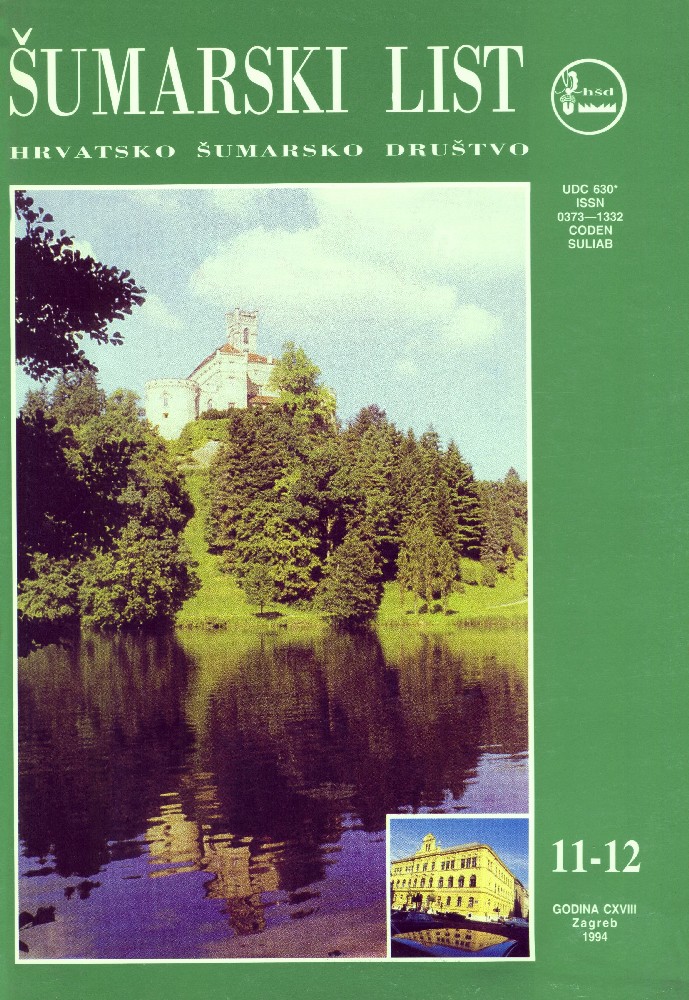
broj: 11-12/1994
pdf (14,0 MB) |
|
||||||||||||||
| PREGLEDNI ČLANCI | ||
| Piškorić, O. | UDK 630* 902.1 | |
| ANTUN TOMIĆ, 1803-1894. - First Presedent of the Croatian Forestry Society pdf HR EN | 331 | |
| IZVORNI ZNANSTVENI ČLANCI | ||
| Jurković, M. | UDK 630* 235.2 (egzote) | |
| New Species of Dendroflora introduced to the Region of Croatia pdf HR EN | 339 | |
| PRETHODNO PRIOPĆENJE | ||
| Medvedović, J. | UDK 630* 18.581.5 : 111.88 | |
| Forest Climate and Phytomass of the Ground Layer in one Part of the Samobor Mountains pdf HR EN | 349 | |
| STRUČNI ČLANCI | ||
| Vojinović, M., Miočić, D. | UDK 630* 151.7/8 (Dama dama) | |
| Investigation of Fallow on the Badija Island pdf HR EN | 357 | |
| Summary: Soon after Fallow Deer had been brought into the surroundings of Mljetska jezera (1958) the Directorate of the Brioni Islands settled two pairs of the same wildlife also on the Badija island, near Korčula. The island comprises slightly less than 100 ha. By a ruling of the Institute for the Conservation of Nature, dated 26th March 1970, Badija island was entered in the Register of specially protected nature grounds under the Index No. 283, in the category of nature reserves, in accordance with the Law on Environmental Protection (N. N., No. 5411976) and today N. N., No. 3011994, in the category of important landscapes. Since the introduction of Fallow Deer up until the present time this island has generally not been subjected to any form of management. Deer were left to the natural provision of food offered by the plants on the island and its quarry, which has been used as a refuse dump by HPT »Korčula«. In the 1980´s a herd of approximately sixty head of Fallow Deer appeared at the late afternoon in the monastery garden. This unofficial data indicates that the habitat suits the Fallow Deer, although the question remains as to the whether Fallow Deer are suitable for this habitat. At the end of the last, and beginning of this decade, considerable forest areas on Badija were illigally und unprofessionally felled. The deer wildlife with its constant browsing prevented reforestation of the evergreen oak stumps, which therefore gradually deteriorated making soil, and consequently the whole site, subject to degradation. At around that time, or little later, poachers started hunting out of Fallow Deer. Today, a small group of Fallow Deer live on Badija. Key words: Fallow Deer; plant potential; illegal felling | ||


